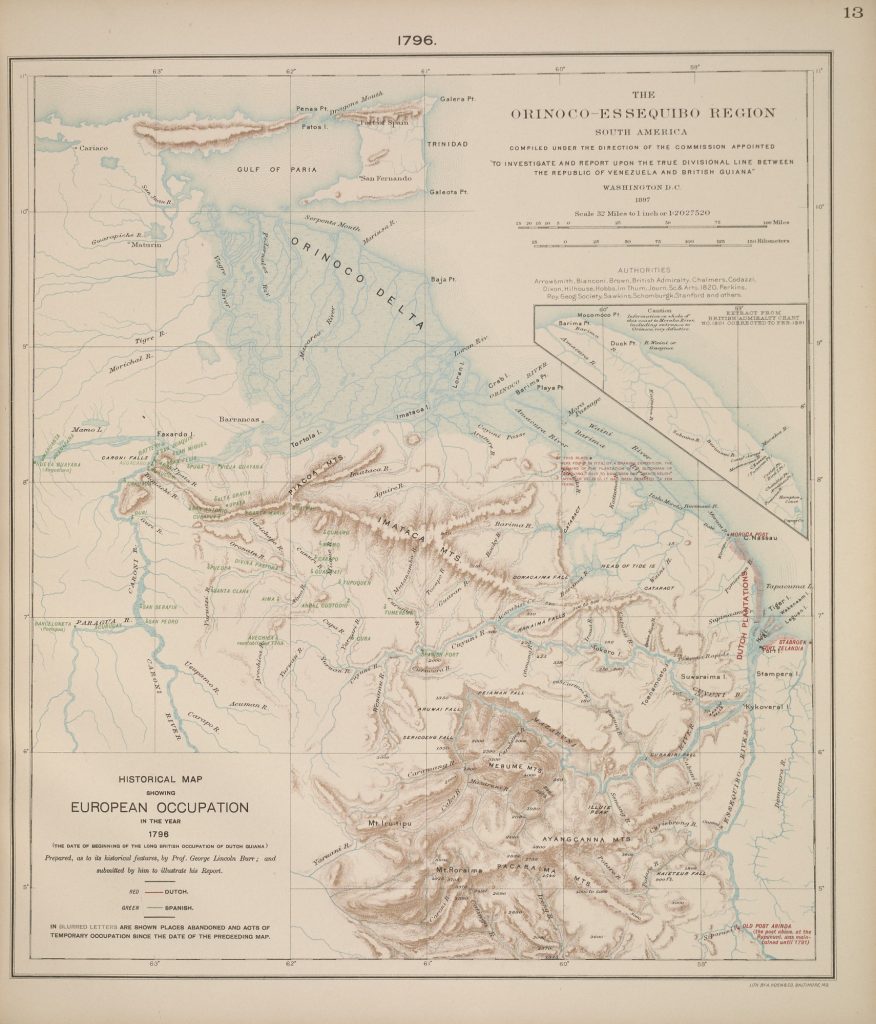
In 1796, the United States commissioned research into the “true” border between Venezuela and British Guiana. While a loose border had been set up by the British a few years prior, the United States sought to gain a better understanding of that border. However, with creating borders comes further separation of people. While the United States may have initiated this commission in order to gain an understanding of the geographical borders of Latin America, it was actually participating in the division between people. The United States was indeed furthering the divide between Latin Americans that had been initiated by European colonialism.
This divide between Venezuela and British Guiana had not existed in this form before European colonialism interfered in the region. National and racial identities were being created through the creation of borders. New identities were forcibly applied to the people of Latin America that had not existed before. Among the newly created political and racial identities of these two countries, the concept of immigration was forever altered in Latin America. In a very short amount of time, Latin Americans were confined to a specific geographical region due to European colonialism and were considered immigrants if they chose to leave that region. While this certainly altered national and racial identities along with inter-state relations between Venezuela and British Guiana, this phenomenon was taking place throughout Latin America. As various European countries fought for control of certain territories of Latin America, new states were being created to represent that control. While the United States’ commission for creating a map was an honest attempt at understanding the geography of the region, its necessity is unfortunately due to European colonialism.
Source:
“Report and accompanying papers of the Commission appointed by the President of the United States to investigate and report upon the true divisional line between the republic of Venezuela and British Guiana.” Smithsonian Libraries, 1 Jan. 1970, library.si.edu/image-gallery/101267.
